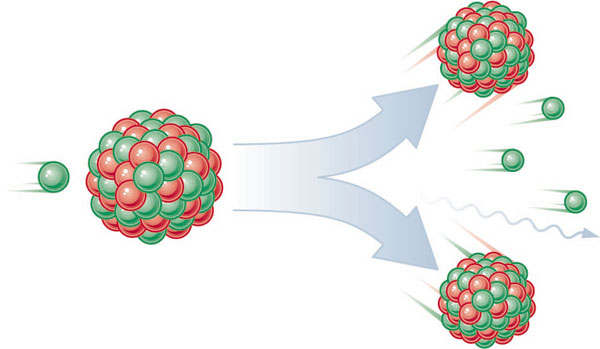
An hour ago the IAEA released the following:
Temperature of Spent Fuel Pools at Fukushima Daiichi Nuclear Power Plant
Spent fuel that has been removed from a nuclear reactor generates intense heat and is typically stored in a water-filled spent fuel pool to cool it and provide protection from its radioactivity. Water in a spent fuel pool is continuously cooled to remove heat produced by spent fuel assemblies. According to IAEA experts, a typical spent fuel pool temperature is kept below 25 ˚C under normal operating conditions. The temperature of a spent fuel pool is maintained by constant cooling, which requires a constant power source.
Given the intense heat and radiation that spent fuel assemblies can generate, spent fuel pools must be constantly checked for water level and temperature. If fuel is no longer covered by water or temperatures reach a boiling point, fuel can become exposed and create a risk of radioactive release. The concern about the spent fuel pools at Fukushima Daiichi is that sources of power to cool the pools may have been compromised.
The IAEA can confirm the following information regarding the temperatures of the spent nuclear fuel pools at Units 4, 5 and 6 at Fukushima Daiichi nuclear power plant:
Unit 4 14 March, 10:08 UTC: 84 ˚C 15 March, 10:00 UTC: 84 ˚C 16 March, 05:00 UTC: no data Unit 5 14 March, 10:08 UTC: 59.7 ˚C 15 March, 10:00 UTC: 60.4 ˚C 16 March, 05:00 UTC: 62.7 ˚C Unit 6 14 March, 10:08 UTC: 58.0 ˚C 15 March, 10:00 UTC: 58.5 ˚C 16 March, 05:00 UTC: 60.0 ˚C The IAEA is continuing to seek further information about the water levels, temperature and condition of all spent fuel pool facilities at the Fukushima Daiichi nuclear power plant.
It seems the spent rods are suddenly becoming the centre of greatest concern. A few hours earlier, the New Scientist released this description of the implications:
The situation at Japan’s Fukushima Daiichi nuclear power plant has become extremely unnerving. The Tokyo Electric Power Company has now admitted that the spent fuel rods could go critical – that is, a nuclear chain reaction could restart.
We have known since yesterday that the reactors themselves were coming under control, and that the biggest threat came from the spent fuel ponds, where the water level has fallen and temperatures have risen. That could lead to the stored fuel rods breaking open, releasing their radioactive contents.
Kyodo News reports:
Tokyo Electric Power Co. said Wednesday it is considering spraying boric acid by helicopter to prevent spent nuclear fuel rods from reaching criticality again, restarting a chain reaction, at the troubled No. 4 reactor of its quake-hit Fukushima No. 1 nuclear power plant. “The possibility of recriticality is not zero,” TEPCO said as it announced the envisaged step against a possible fall in water levels in a pool storing the rods that would leave them exposed.This is a real surprise. These ponds are a standard feature of nuclear reactors, and are typically designed to ensure that nuclear reactions cannot restart in the fuel rods. Among other things, the rods should be widely spaced in the pond.
The BBC explains that the company is now “caught between a rock and a hard place”:
If the fuel rods are dry and hot, there could be damage to the cladding and the release of light radioactive nuclei. To prevent that, you would want to inject water. But water on its own is a neutron moderator and would enhance the chances, however small, of criticality… [water] reduces the speed of the neutrons, meaning they can be captured by uranium nuclei in the fuel rods, inducing them to split. Without water, the neutrons travel too fast, and are not captured.Hence the company’s proposal to add boric acid, which would mop up the neutrons and hopefully stave off the reactivation of a nuclear reaction. If this did happen, it does not mean there would be a nuclear explosion, but the rods would heat up, the zirconium cladding would probably split, and the likely release of radioactive material into the atmosphere would be significantly higher.
In the longer term, questions will be asked about how the ponds wound up in this condition, when it should have been completely avoidable.
God knows I’m not a nuclear scientist, but discretion appears to be the better part of valour today. And ongoing until the crisis plays out. Thoughts and prayers with the Japanese.

